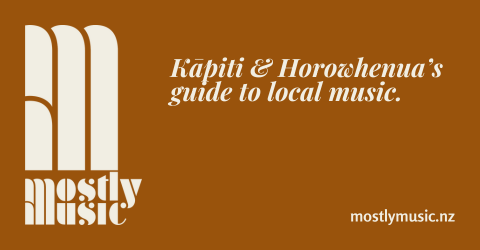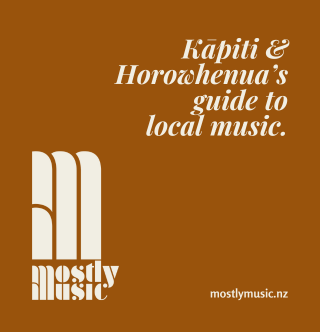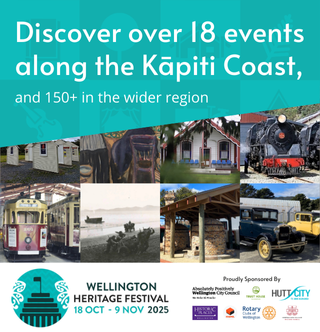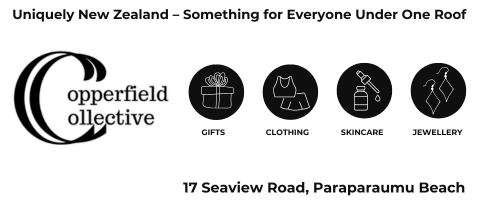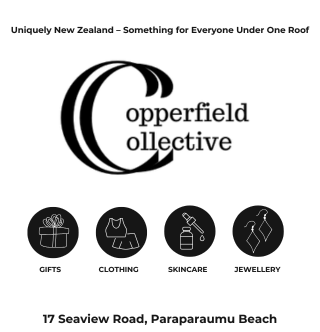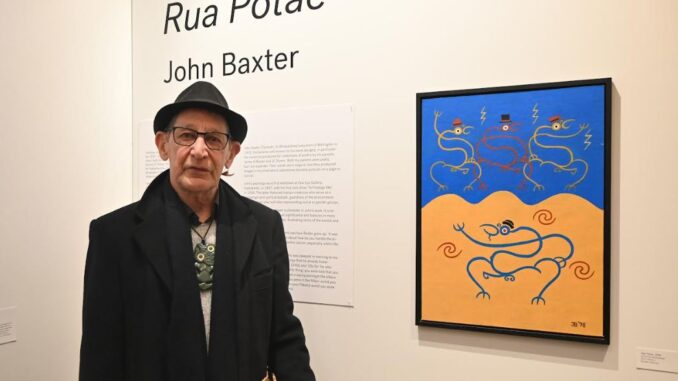
Rua Pōtae, the title John Baxter has chosen for an exhibition of early paintings and book illustrations at Toi MAHARA, translates simply as Two Hats.
It comes from a saying among Māori elders when he was growing up: “If you were in the Māori world you wore your Māori hat and if you were in the Pākehā world you wore your Pākehā hat. The two didn’t mix.
“I didn’t grow up in a bi-cultural country,” he says. “I grew up in a mono-cultural country with an indigenous minority that struggled to keep its head above water.
“That was how it was for me – and I think even more for my parent’s generation. One of their responses was to make a complete division between the two worlds.
“My generation was required by the dominant Pākehā society to wear two hats at once – and that’s an impossible thing to do comfortably unless one side learns to accommodate the other.”
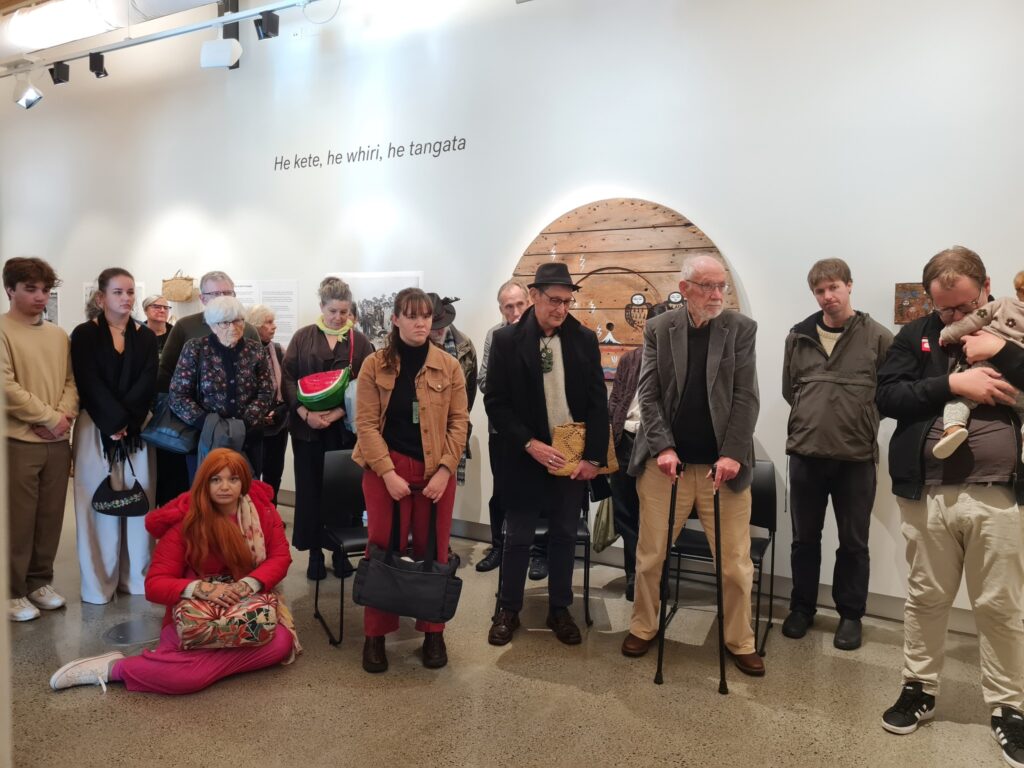
John Baxter (Taranaki Te Whakatōhea) was born in Wellington in 1952 and grew up in an artistic household. His parents – one Pākehā and the other Māori – were poets and writers who achieved recognition and acclaim.
His father, James K Baxter, became one of New Zealand’s best-known poets. His mother, Jacquie Sturm (born Te Kare Papuni) was a poet, short story writer, librarian and one of the first Māori women to complete an undergraduate degree at Victoria University of Wellington.
She published as JC Sturm and was active in Māori institutions including cultural club Ngāti Pōneke and the Māori Women’s Welfare League. She ensured that both her children were involved in Māori cultural activities as they grew up.
John remembers going with his parents to Māori language classes during the evening in Wellington. Classes of only half a dozen students and a course that came under the jurisdiction of Victoria University’s Russian Department in his view established the context for the-then view of Māori in society.
As an adult, John Baxter has come to appreciate the importance of his father’s Scottish heritage to his views on bi-culturalism.
“I’m looking through my Māori lens but I’m also quite interested in the fact that some of those early colonials who came to Aotearoa from Ireland and Scotland had had much the same experience as Māori have had.”
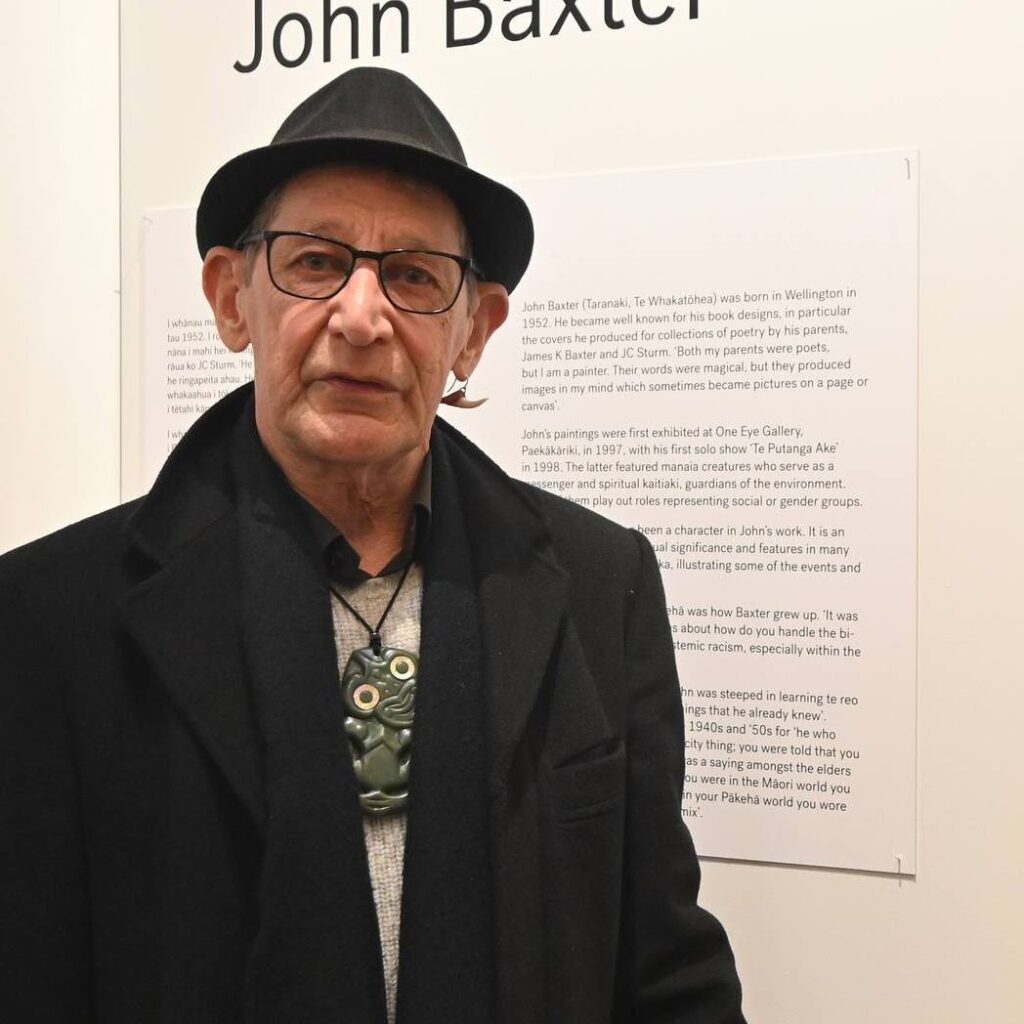
John Baxter remembers his father typing poetry in the evenings and his mother filling school exercise books with her poetry and stories. But his inclination was towards art and his eyes were drawn to the Colin McCahon painting on the living room wall.
“We had a blackboard on the wall in the kitchen of the house in Ngaio (Wellington). I remember my mother coming into the kitchen and finding me having a fight with my sister. I was about five years old and I was getting her to draw for me because I couldn’t control the chalk well enough and I was telling her, ‘you know how to draw, draw a proper face’.”
In Dunedin while his father held a Burns Fellowship at Otago University, John Baxter went to King Edward Technical College because it was the only secondary school that provided an art course.
“I wanted to go on to art school but my father had become quite anti-academic. He took me to Auckland to see Colin McCahon. “And he (McCahon) said, ‘No. don’t go to art school – it will take you five years to get through and another five years to get rid of the influence. Why not get yourself a flat in Grafton, a girlfriend, a flagon of wine, rip up the carpet and get painting’.”
John Baxter says he regrets not having that formal training, particularly in technique, but while he describes himself as largely self-taught, he did seek training later at Whitireia in Porirua.
He became known for his book designs, in particular the covers he produced for collections of poetry by his parents. A number of these are included in the exhibition.
His paintings were first exhibited at One Eye Gallery in Paekākāriki in 1997. His first solo show was Te Putanga Ake in 1998. The latter featured manaia creatures who serve as messengers and spiritual kaitiaki – guardians of the environment.
“My first paintings were about loss,” he says, “not only of elders who had died but the knowledge they had and the richness they contributed to my world and the world of Maori.”
His tribal connections imbue him with a strong sense of the injustice of not only for Parihaka but more importantly what he sees as the colonial violation of Taranaki.
John Baxter describes his work as asking questions or making observations as distinct from making statements. Now into his 70s and no longer painting, he still considers himself an artist.
“I see the world as an artist – in an objective and questioning way, trying not to be too judgemental but indicating that this or that need to be looked at.”
Toi MAHARA Director Janet Bayly says she has long thought that John Baxter’s paintings would be an appropriate exhibition for the gallery to mount.
“I am very pleased that it has finally happened. Baxter’s work explores important ideas and stories about living in our bi-cultural history and society that are more relevant than ever today.
“Through his mother, the celebrated poet JC Sturm, his whakapapa connects him to Te Ātiawa. That movement and the values of Parihaka resonate with contemporary audiences more than ever, and John’s imagery as a painter and story-teller remains as compelling as ever.”



